
Dallas County – May 2017
When I was a boy growing up in Denton County, most days after school you could find me heading off to the nearby creek bottoms to spend the last few hours of daylight outdoors and in the woods. Under the canopy of trees and close to the water is where I preferred to explore, but on occasion I would wander away from the riparian areas and hike up into the surrounding grassland–the remains of abandoned farms. On these forays it was not altogether unusual for me to flush one or more of these Texas-sized Black-tailed Jackrabbits as I made my way.
But that was a long time ago. There aren’t as many jackrabbits in the DFW Metroplex these days. Jackrabbits need large tracts of wide open space in order to thrive. They seem to have a preference for habitats including some mix of short grass and low brush, interspersed with areas of open ground. Ecosystems like these rarely survive urban development, and as they go, so go the jackrabbits.
This is in stark contrast to the smaller and more adaptable Eastern Cottontail, which is very common all across North Texas. They do just fine hiding under landscaping during the day and coming out to nibble lawn grass at night. You probably have one or two cottontails in your own yard. Jackrabbits need a ranch.
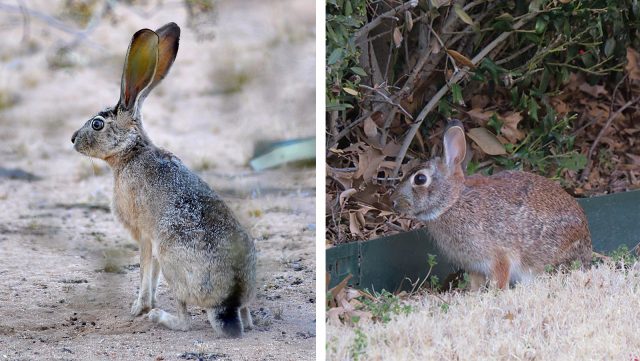
But, that doesn’t mean there are no jackrabbits around. Black-tailed Jackrabbits can still be found in the undeveloped margins surrounding the metroplex. Sightings are reported with some regularity in our more rural areas.
There are even pocket populations to be found in a few special places across the metroplex proper. The pictures below are from one such place in Dallas County.
These jackrabbits were photographed on a warm spring afternoon. They are chasing each other around with mating on their minds. With a little luck, these long-eared hares will ensure the population here continues to thrive for at least another year, and hopefully more!
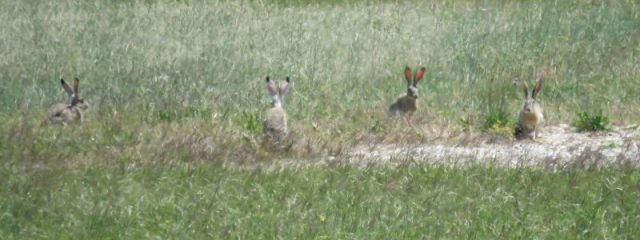
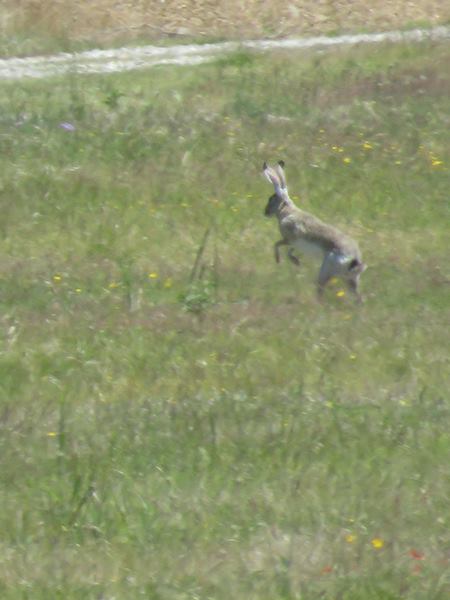
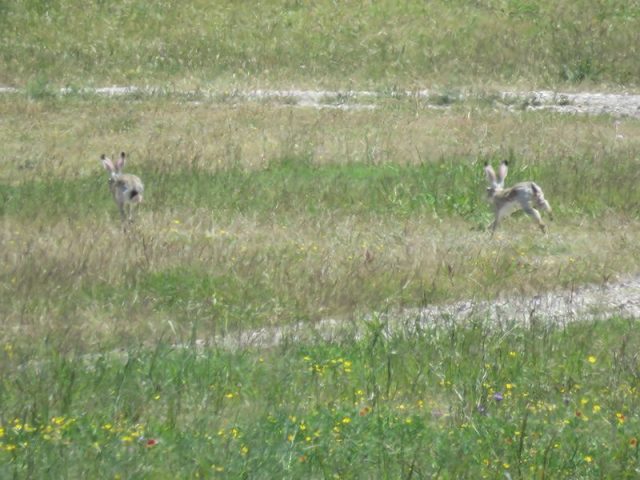

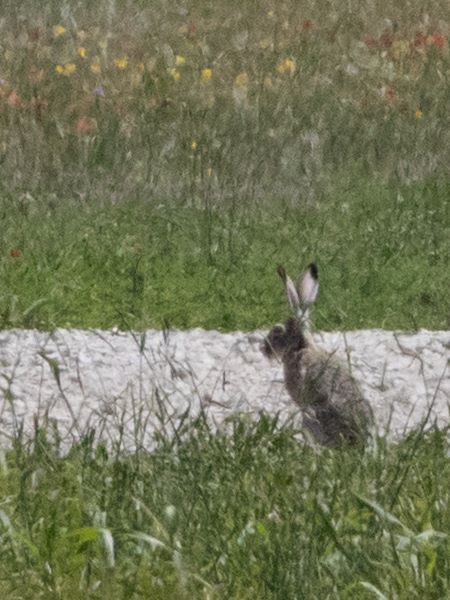
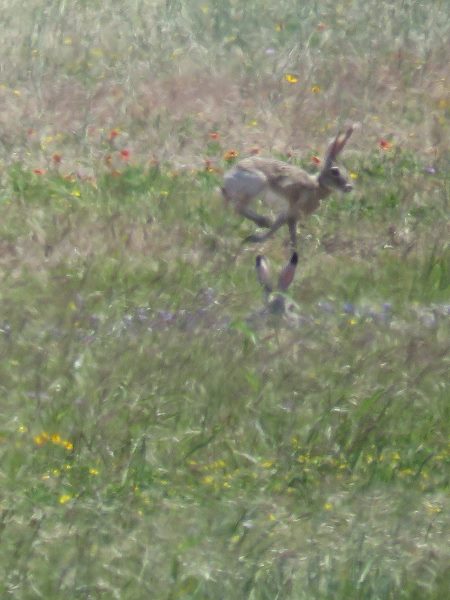
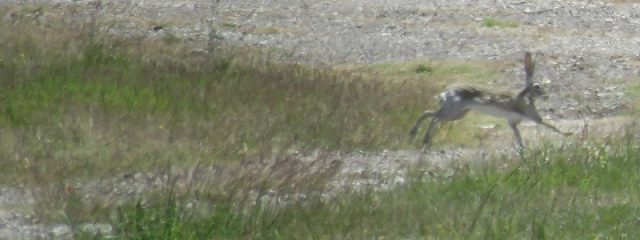

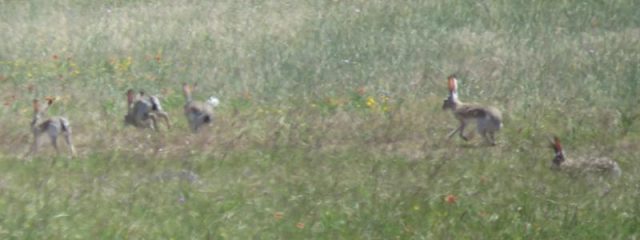
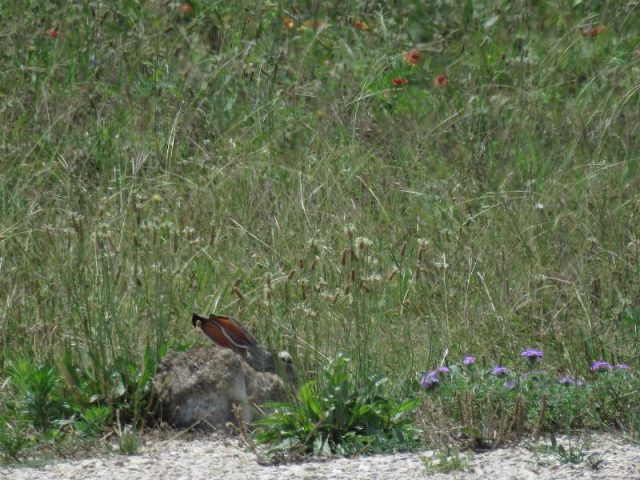

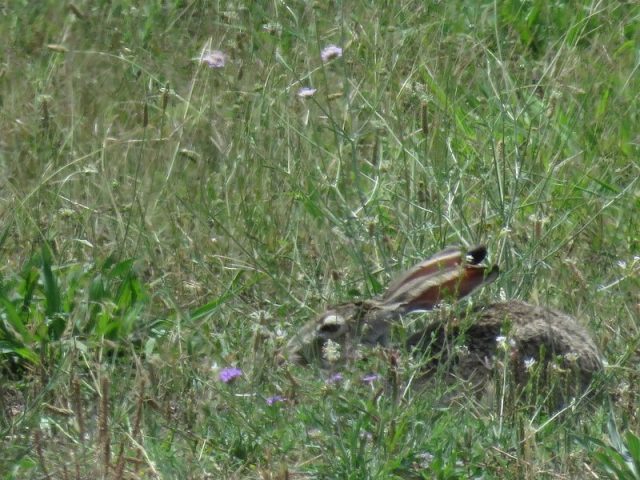
Wikipedia has a nice article on the Black-tailed Jackrabbit. I’ve included excerpts below. You can read more by following this link: Wikipedia – Black-tailed Jackrabbit.
The black-tailed jackrabbit (Lepus californicus), also known as the American desert hare, is a common hare of the western United States and Mexico, where it is found at elevations from sea level up to 10,000 ft (3,000 m). Reaching a length around 2 ft (61 cm), and a weight from 3 to 6 lb (1.4 to 2.7 kg), the black-tailed jackrabbit is the third-largest North American hare. Black-tailed jackrabbits occupy mixed shrub-grassland terrains. Their breeding depends on the location; it typically peaks in spring, but may continue all year round in warm climates. Young are born fully furred with eyes open; they are well camouflaged and are mobile within minutes of birth, thus females do not protect or even stay with the young except during nursing. The average litter size is around four, but may be as low as two and as high as seven in warm regions.
The black-tailed jackrabbit does not migrate or hibernate during winter and uses the same habitat of 0.4 to 1.2 mi2 (1–3 km2) year-round. Its diet is composed of various shrubs, small trees, grasses, and forbs. Shrubs generally comprise the bulk of fall and winter diets, while grasses and forbs are used in spring and early summer, but the pattern and plant species vary with climate. The black-tailed jackrabbit is an important prey species for raptors and carnivorous mammals, such as eagles, hawks, owls, coyotes, foxes, and wild cats.
Like other jackrabbits, the black-tailed jackrabbit has distinctive long ears, and the long powerful rear legs characteristic of hares. Reaching a length about 2 ft (61 cm), and a weight from 3 to 6 lb (1.4 to 2.7 kg), the black-tailed jackrabbit is the third-largest North American hare, after the antelope jackrabbit and the white-tailed jackrabbit. The black-tailed jackrabbit’s dorsal fur is agouti (dark buff peppered with black), and its undersides and the insides of its legs are creamy white. The ears are black-tipped on the outer surfaces, and unpigmented inside. The ventral surface of the tail is grey to white, and the black dorsal surface of the tail continues up the spine for a few inches to form a short, black stripe.[ The females are larger than males, with no other significant differences




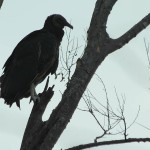

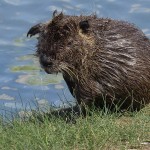
We have a small population of jack rabbits near Era. Wind farm people are wanting to put windmills in our area. I feel this would disrupt the area for these rabbits. Is there a place I can share my concerns? Would it even matter? I would hate to loose these and other wildlife that is present in our area. We also have a few roadrunners here.
I don’t think there is much that can be done, Sam.
There is a population of them at Addison Airport, you can see them at the north end of the runway